Growing Sweet Potatoes in the Great White North
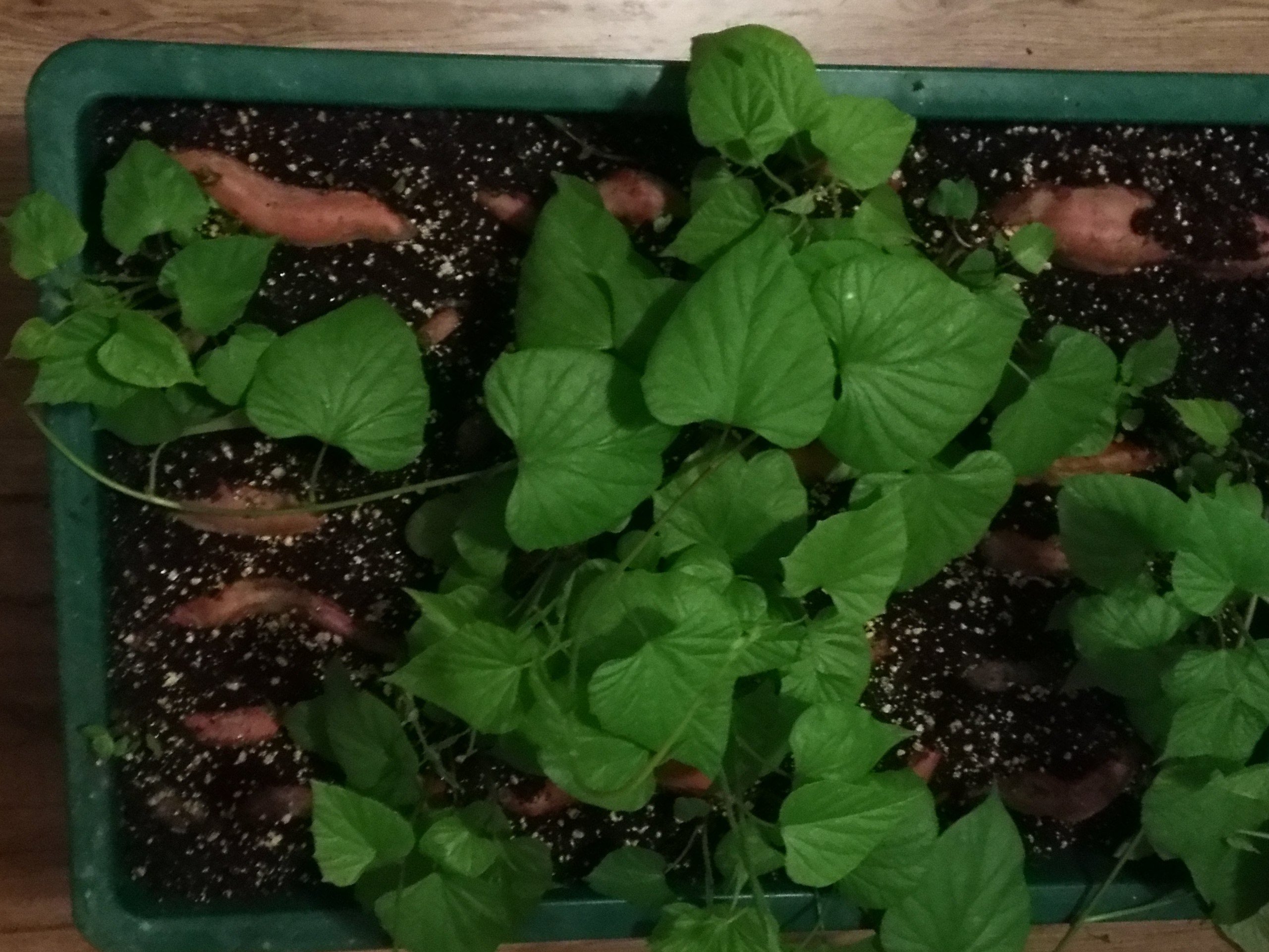 Cultivating slips for growing sweet potatoes Cultivating slips for growing sweet potatoesUpdate 2025: Sweeties Looking Good!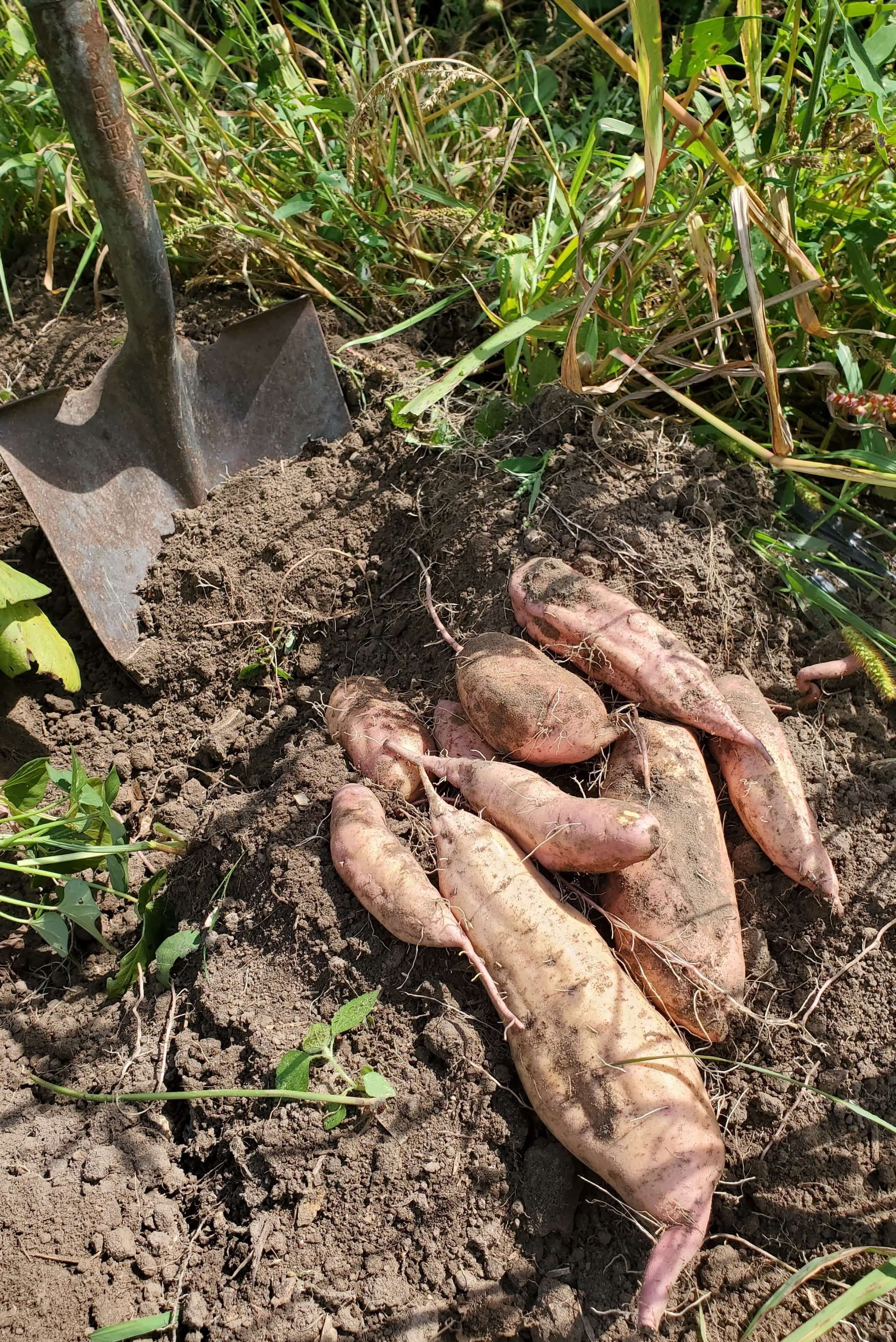 Galetta Sunrise Sweet Potatoes Test Dig 2025 Galetta Sunrise Sweet Potatoes Test Dig 2025OK I'm a happy farmer today! Dug up a sweet potato plant to see how they were coming along, got 3 lbs. from this plant at the end of the row. First time growing this cultivar, the literature says it has a 'moderate sweetness'. Will be testing that out at dinner tonight. Roasted chicken, sweet potatoes and carrots all from the farm. I'm a lucky guy! OK, back to the article. Growing sweet potatoes can be an important part of your food plan. And despite the fact that Ipomoea batatas is very susceptible to cold, you can grow them even in my chilly 45N latitude. Let’s talk about the why, what, how, and how much of growing sweet potatoes in a cold climate.
Why grow sweet potatoes? In my recently-published book Bootstrap Survival Garden I explain the fact that long-term survival means creating a sustainable food supply, and that means growing your own food. The 'Core Four' crops in that book are:
These crops all meet my criteria for yield, nutrition, and storability. In other words, they can provide you a lot of food, in places where the ‘eating season’ extends well beyond the ‘growing season’.
I also added another criterion: repeatability. That is, the ability to re-grow the crop from your own seed stock. And if you go about it right, growing sweet potatoes admirably meets all these criteria. What to Grow?
When I first decided to try growing sweet potatoes to add to our survival food plan a couple years ago, I checked around with some successful growers in my area. The variety most often recommended was ‘Georgia Jet’. It has the reputation for high yields, cold tolerance (relative to other varieties), and producing well even in a short growing season; about 90 days to maturity from transplant. 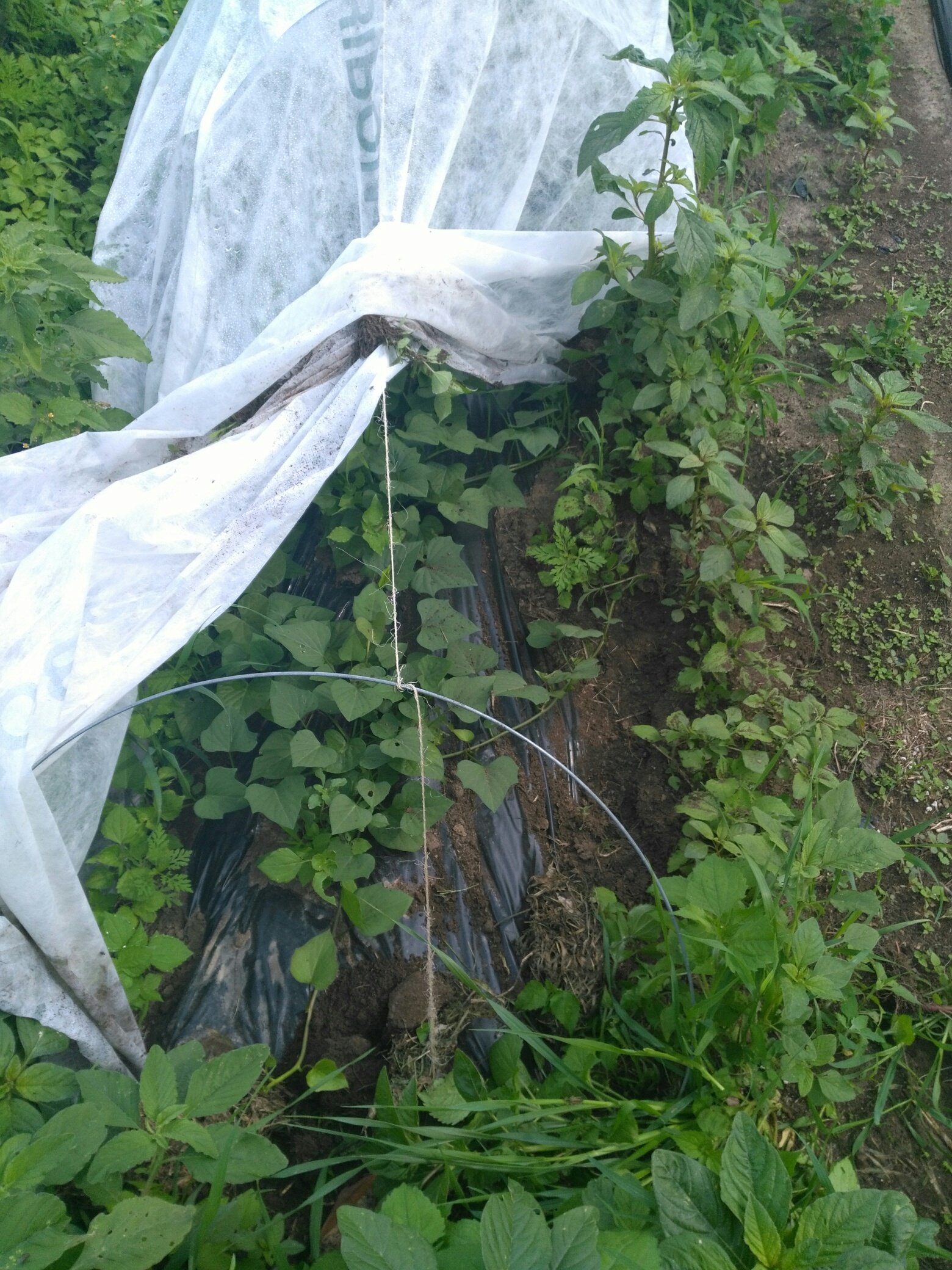 Georgia Jet Sweet Potatoes all in a row Georgia Jet Sweet Potatoes all in a rowGeorgia Jet is available from a number of commercial seed sources; I got my first slips from one the aforementioned successful growers. My experience bears out the desirable characteristics of this variety. The SECRETS to Growing Sweet Potatoes in a cool climate
With slips in hand, and past your last frost date, you need to prepare a seed bed. What we’ve learned from experience is that, while the soil does not need to be especially rich, it should be deep and loose for best yields. The best way to achieve this is to mound up the row i.e. make a deep bed. Steps in the process:
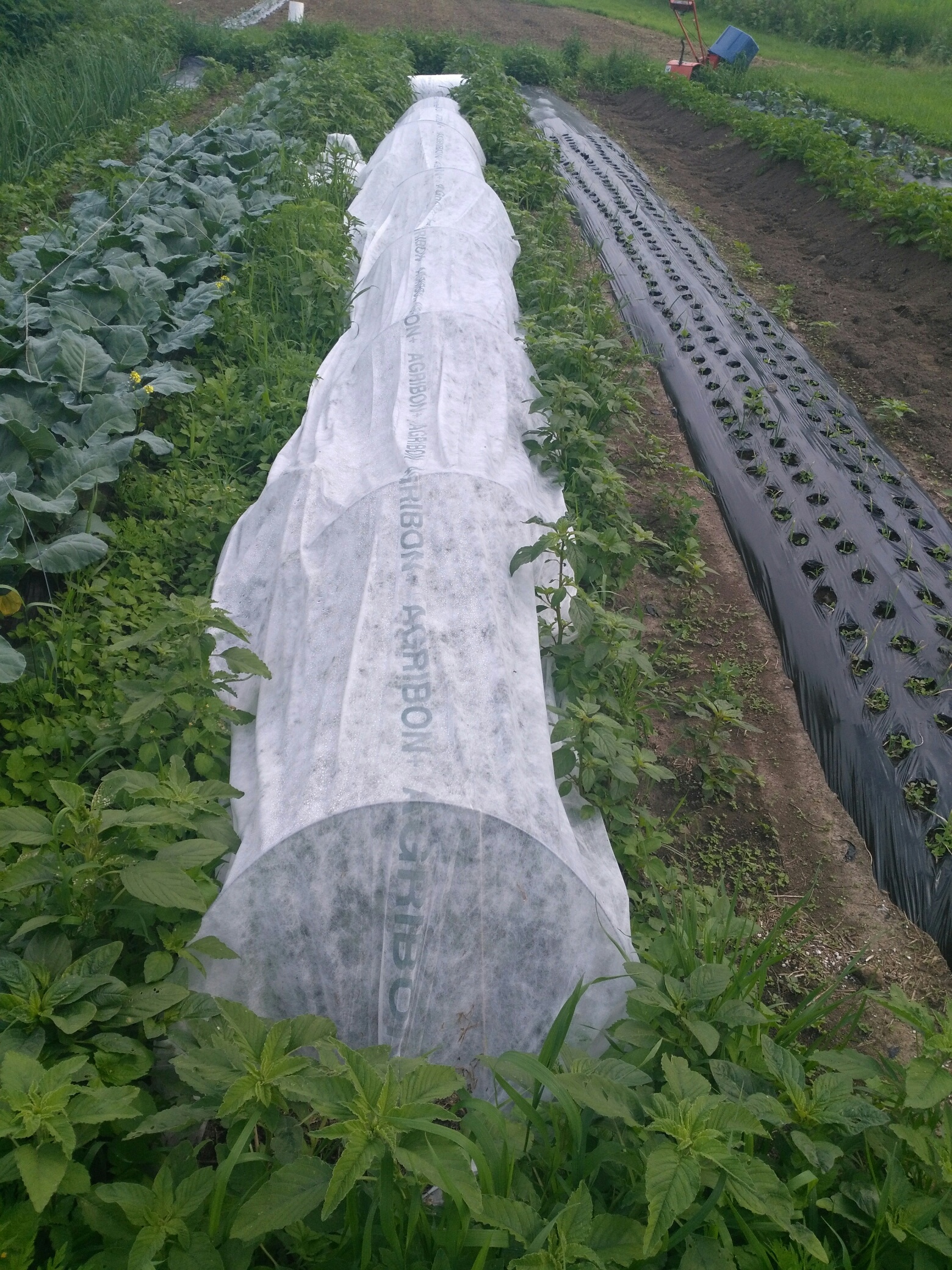 Growing sweet potatoes snug under row cover Growing sweet potatoes snug under row coverYes, I know that row needs some weeding ;-) It was a wet and weedy season in my part of the Great White North. But the plastic mulch helped keep the weeds out and the heat in, so I got some great spuds anyway. Free Report The consumer demand for fresh local organic food has never been higher. Bad news on the supply chain is good news for local growers. Get my free Organic Market Gardener Start-up Guide and see if this is the right time to launch your CSA market garden business. How much to grow?
The books say you can expect a yield of 3 to 5 pounds per plant. Following the method outlined here, Year One we put 30 plants in a 50-ft row and got 100 pounds of tubers. This year, 20 plants yielded 80 pounds. So that seems like a good estimate. Harvesting, curing and storing sweet potatoes
This may be the most critical part of growing sweet potatoes, from a survival food perspective. Sweet potatoes are very susceptible to chill injury, and must be cured at high temperatures (90 degrees) for 5 to 7 days, and then stored above 55-degrees for long-term viability.
This also means you need to get them out of the field before soil temperatures drop below 55. Chilled sweet potatoes won’t store, and won’t sprout. Keep them (much like winter squash) in a cool (60-65 degree) bedroom or storage closet until ready to eat and sprout. I dug my sweet potatoes, gave them a warm rinse, and let them dry in the sun for a few hours. Then I moved them to my plant starting room, and cranked the heat to 90. Left them in there for 6 days, then brought them into a spare bedroom for storage. 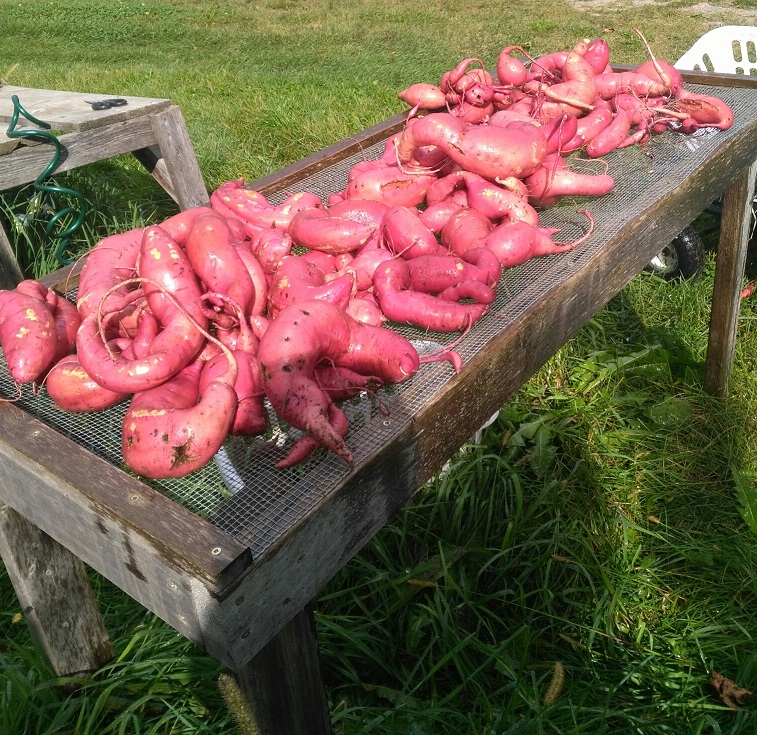 Sweet potatoes drying in the sun Sweet potatoes drying in the sunClosing the Loop - growing slips. If you have cured and stored your sweet potatoes this is pretty easy. The basic process:
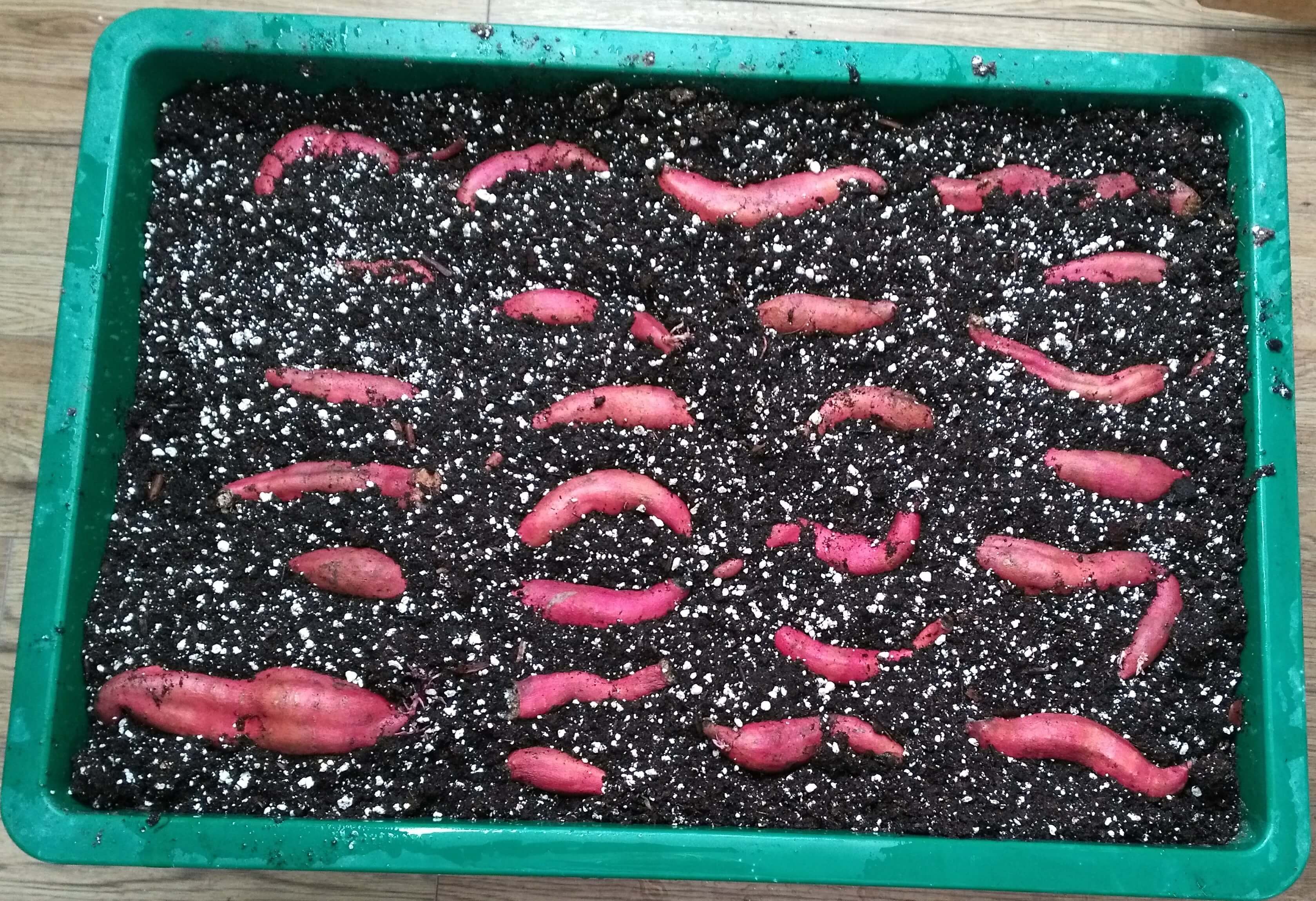 These little tubers are just right for sprouting These little tubers are just right for sprouting
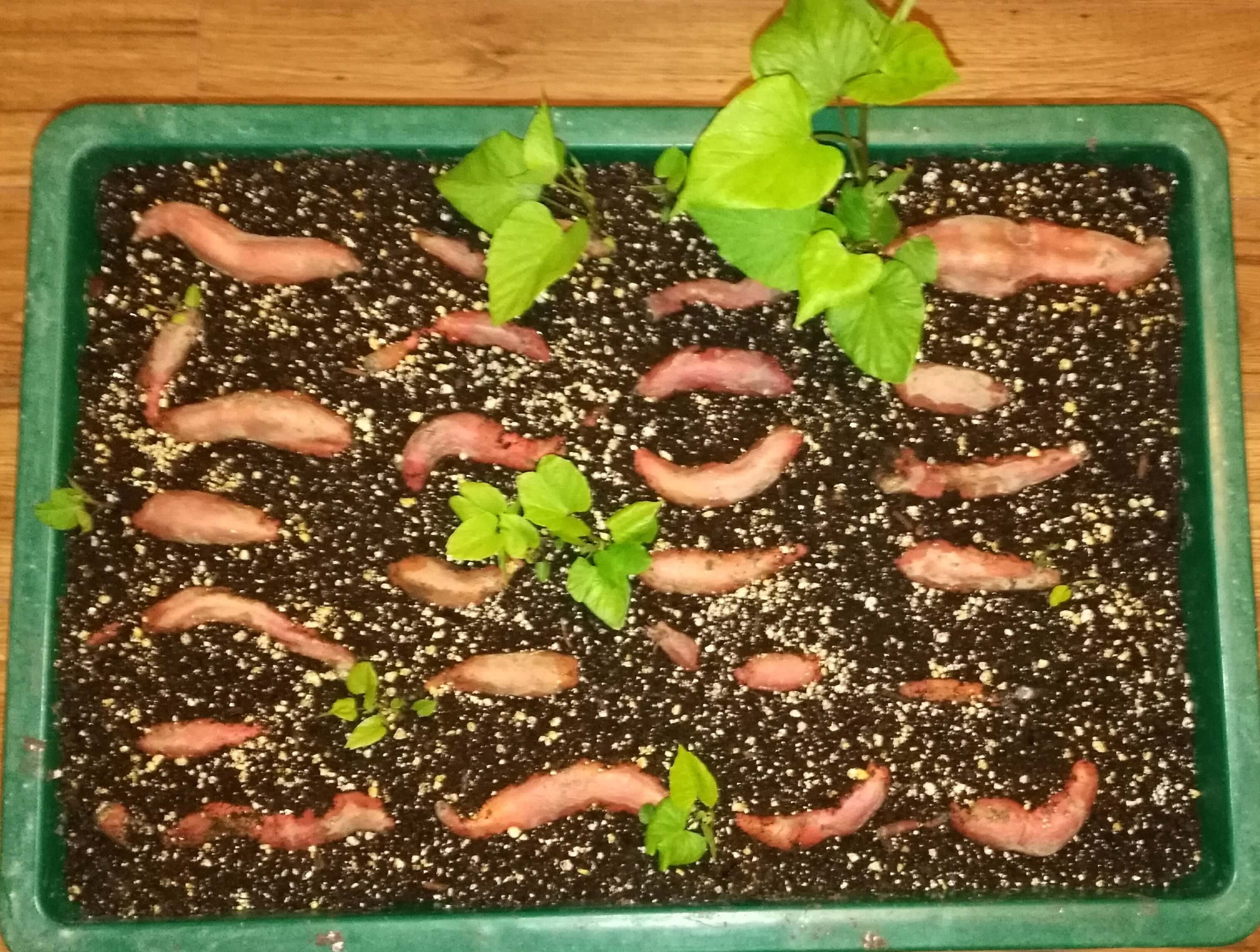 When ready to plant, pull the base of the sprout free from the tuber, and plant as detailed above. Here's where you can buy Georgia Jet Resources for 'Growing Sweet Potatoes'Learn to grow food like you have to, BEFORE you have to: The Bootstrap Survival Garden featuring sweet potatoes and 11 more critical survival crops. Chapter 9 - Homestead Gardening: The Self-Sufficient Back Yard Picture your backyard bursting with fresh, vibrant (and profitable) vegetables: Backyard Garden Profits
|
See Something You Like? Share!
Got questions to ask, stories to tell?
Share your organic market gardening question, or comment, or story.
Recent Articles
-
Best Chicken Coop and Accessories for Small Farms and Homesteads
Nov 15, 25 03:35 PM
Looking for the best chicken coop? Here are the top coops, accessories, nest boxes, and gear to build a safe, productive poultry setup. -
Farm grown reviews of products recommended by New Terra Farm
Nov 07, 25 06:25 AM
Find great farm and garden products in my farm grown reviews -
Community Supported Agriculture Marketing Ideas To Sell Out The Season
Nov 05, 25 05:18 AM
Authentic Community Supported Agriculture marketing ideas to grow loyalty, boost sign-ups, and sell out your CSA every year



